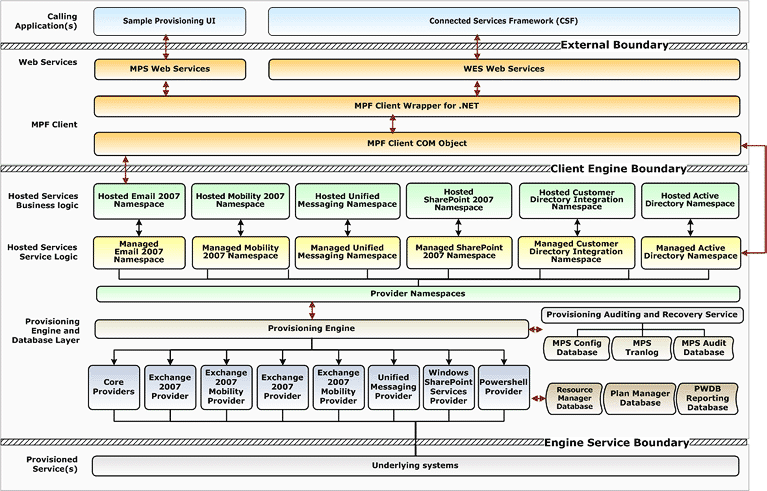Microsoft Provisioning System (MPS) uses three layers of namespaces to provide the greatest flexibility possible for calling MPS procedures. The architecture in which these layers exist consists of the following:
- Upper level - This layer contains the high-level Managed
Windows-based Hosting Namespace.
- Mid level - This layer contains managed namespaces, such
as the Managed Windows SharePoint Services Namespace.
- Lower level - This layer contains the low-level provider
namespaces, such as the SQL Admin Provider Namespace and IIS
Provider Namespace.
The Managed Namespaces are provided to enable you to call preconfigured sets of named procedures to perform specific groups of tasks. The Managed Namespaces expose methods that aggregate procedure calls to lower-level managed namespaces, as shown in the following figure. Methods include those that enable you to provision hosted Windows SharePoint Services, Active Directory, and DNS services.

Assess Microsoft Provisioning System Namespaces
Assess the functionality of these namespaces with respect to the business logic you need to implement provisioning actions in your system. If the namespaces discussed in this section do not provide the functionality you require in your system, you will need to create your own custom namespaces that call the appropriate procedures of MPS providers.
See the MPS Operations Guide "Developing and Implementing Custom Namespaces" topic for guidance on how to create your own namespaces. You can locate the MPS Operations Guide on the Microsoft Hosting Solutions for Service Providers site at: \Service Provisioning\MPS\MPF\help\opsguide.chm. Also, see Microsoft Provisioning System SDK.
 Note: Note: |
|---|
| The Managed Windows SharePoint Services namespaces do not implement any service plans or resource management logic. This enables use of these namespaces in scenarios where built-in plans and resource management are not desired by the service provider. |